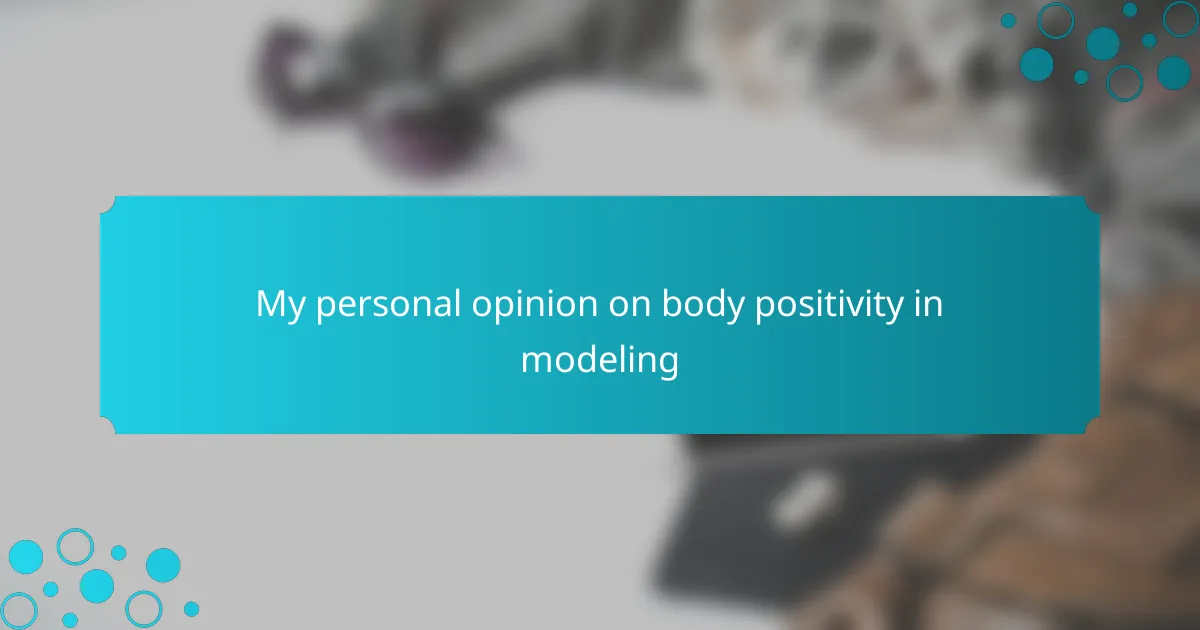Key takeaways
- Sustainable fashion emphasizes eco-friendly materials and ethical labor practices, promoting mindful consumption and a connection to the values behind clothing.
- Supporting sustainable fashion helps address environmental issues and promotes fair labor conditions, offering a creative alternative to fast fashion.
- Challenges in sustainable fashion include inconsistent availability of materials and resistance to change within the traditional fashion industry.
- Aspiring sustainable models should research eco-friendly brands, build an online presence, and network with like-minded individuals to foster community and collaboration.
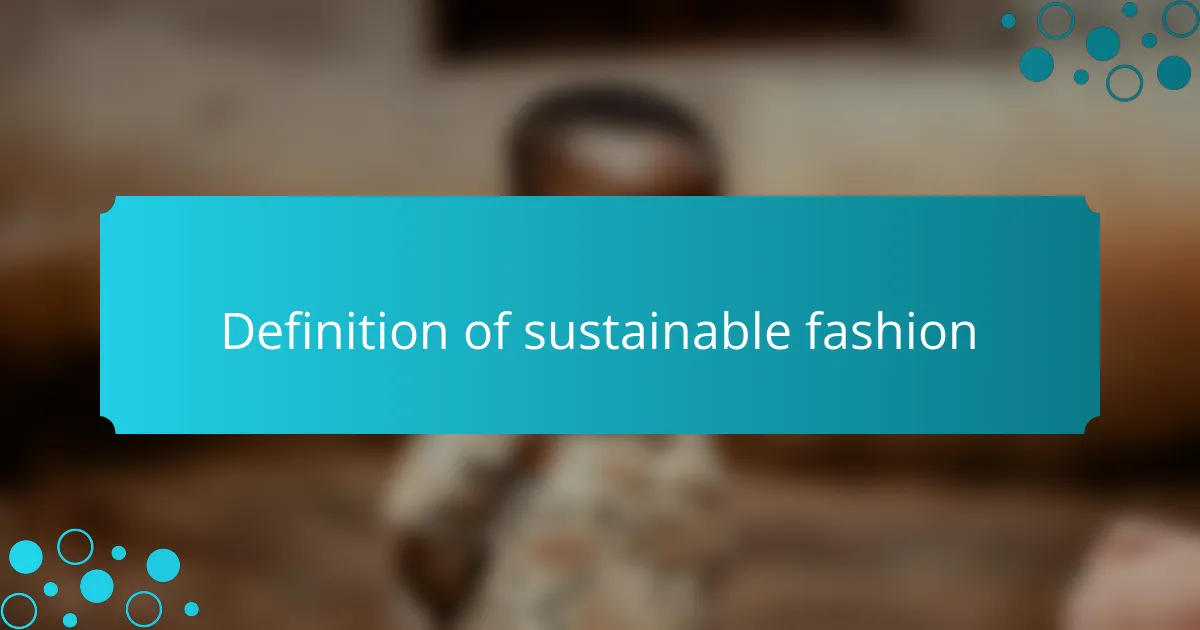
Definition of sustainable fashion
Sustainable fashion, at its core, focuses on creating clothing that is environmentally friendly and ethical. It emphasizes the use of resources that have minimal impact on the planet and advocates for fair labor practices in the fashion industry. This approach directly challenges the fast fashion model, which often prioritizes profit over the planet and people.
I find it fascinating how sustainable fashion encourages consumers to think about the lifecycle of their clothing. When I buy a piece that’s sustainably made, I feel a sense of connection—not just to the garment itself, but to the artisans and the environment. Don’t you wonder how the clothes we wear could reflect our values and promote positive change?
Beyond materials and labor practices, sustainable fashion also promotes mindful consumption. It asks us to consider the quality of what we buy rather than just the quantity. I remember a time when I decided to invest in a few high-quality pieces instead of accumulating countless fast fashion items. It transformed my wardrobe and made me appreciate each item so much more.
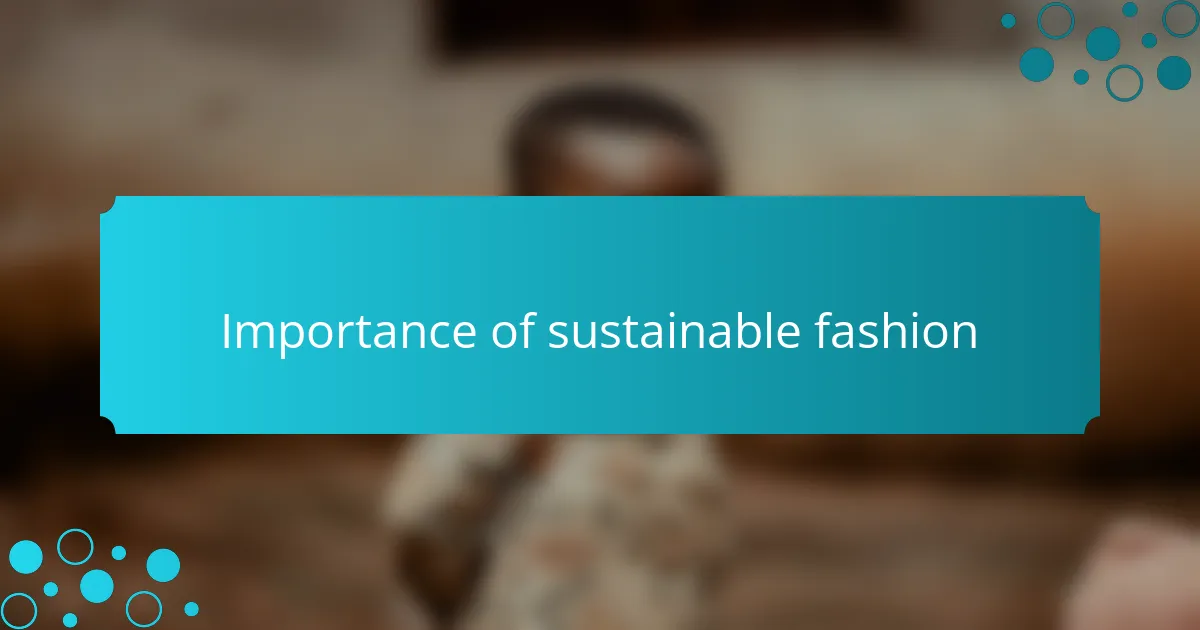
Importance of sustainable fashion
Sustainable fashion is vital in today’s world because it addresses the environmental impacts of the fashion industry, which can be overwhelming. I’ve witnessed firsthand how fast fashion contributes to waste and pollution, and it makes me realize the importance of choosing eco-friendly options. When I opt for sustainable brands, I feel a connection not just to the clothing but also to the greater cause of protecting our planet.
Moreover, supporting sustainable fashion promotes ethical practices within the industry, such as fair labor conditions. I remember attending a sustainable fashion showcase where models wore garments made from recycled materials, and it was inspiring to see creativity thrive without compromising on ethics. It reinforced my belief that fashion can indeed be a force for good.
Here’s a comparison table showcasing some key aspects of sustainable fashion versus traditional fashion:
| Aspect | Sustainable Fashion | Traditional Fashion |
|---|---|---|
| Environmental Impact | Minimized waste, eco-friendly materials | High waste, pollution-intensive |
| Labor Practices | Ethical, fair wages | Often exploitative conditions |
| Consumer Awareness | Encourages conscious consumerism | Promotes fast, impulsive buying |
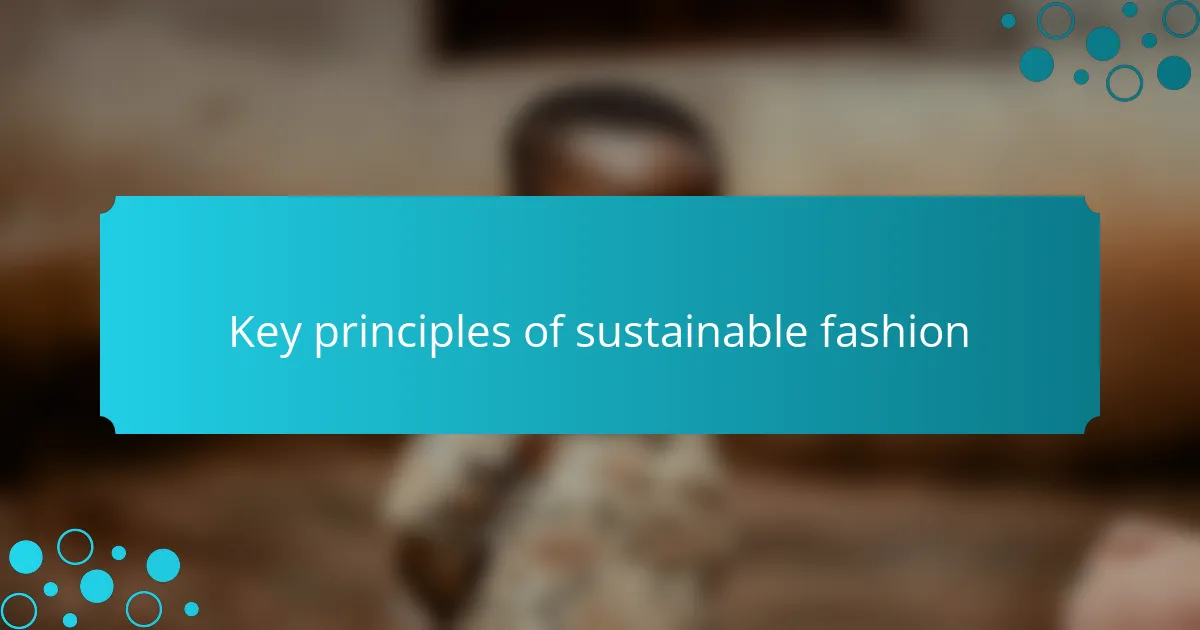
Key principles of sustainable fashion
Sustainable fashion hinges on the use of eco-friendly materials, such as organic cotton, recycled fibers, and innovative textiles that reduce environmental harm. I remember the first time I touched a garment made of Tencel, a fiber made from sustainably sourced wood pulp. It was soft yet resilient, making me realize that sustainability and luxury could coexist beautifully.
Another key principle is fair labor practices. When I learned about the stories behind garments—crafted with care by artisans receiving fair wages—I felt compelled to support those brands. Have you ever considered how your fashion choices could uplift communities and contribute to their well-being? Each purchase can be a vote for a better world.
Mindful consumption also plays a crucial role in sustainable fashion. This principle encourages us to evaluate our needs and prioritize quality over quantity. I made a conscious decision to choose fewer, well-made items that I truly love, and it changed my relationship with my wardrobe. Instead of feeling overwhelmed by choices, I now celebrate each piece as a cherished part of my story.
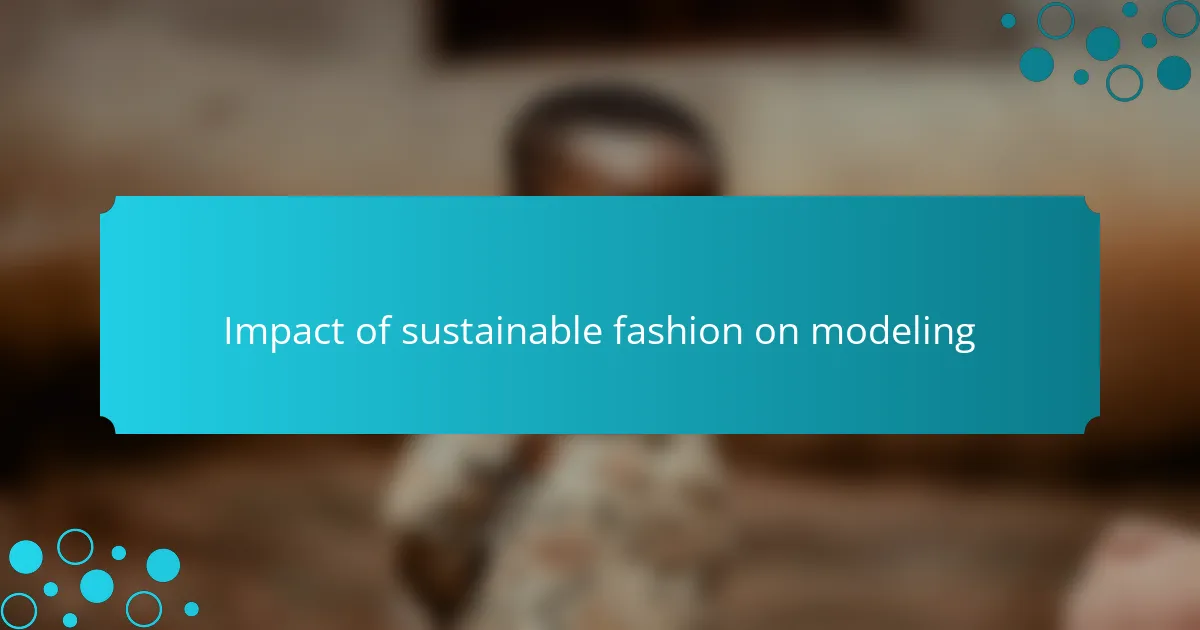
Impact of sustainable fashion on modeling
Sustainable fashion is reshaping the modeling industry in fascinating ways. As a model, I’ve witnessed firsthand how brands are increasingly prioritizing eco-friendly materials and ethical production processes. This shift isn’t just good for the environment; it also empowers us models to align our personal values with our work, creating a deeper emotional connection to what we represent on the runway.
On a personal level, I remember the thrill of participating in a sustainable fashion show. The atmosphere buzzed with passion as designers shared the stories behind their collections. It was clear that every piece was crafted with intention, allowing us to model with pride and purpose. I felt a strong sense of community among the models and designers, united by a shared mission to promote positive change in the industry.
- Emphasis on eco-friendly materials leads to more innovative designs.
- Ethical production fosters transparency in the fashion supply chain.
- Models gain a sense of purpose by promoting brands that align with their values.
- Sustainable fashion encourages diversity and inclusivity in representation.
- The emotional connection between models and the garments creates a more authentic presentation.
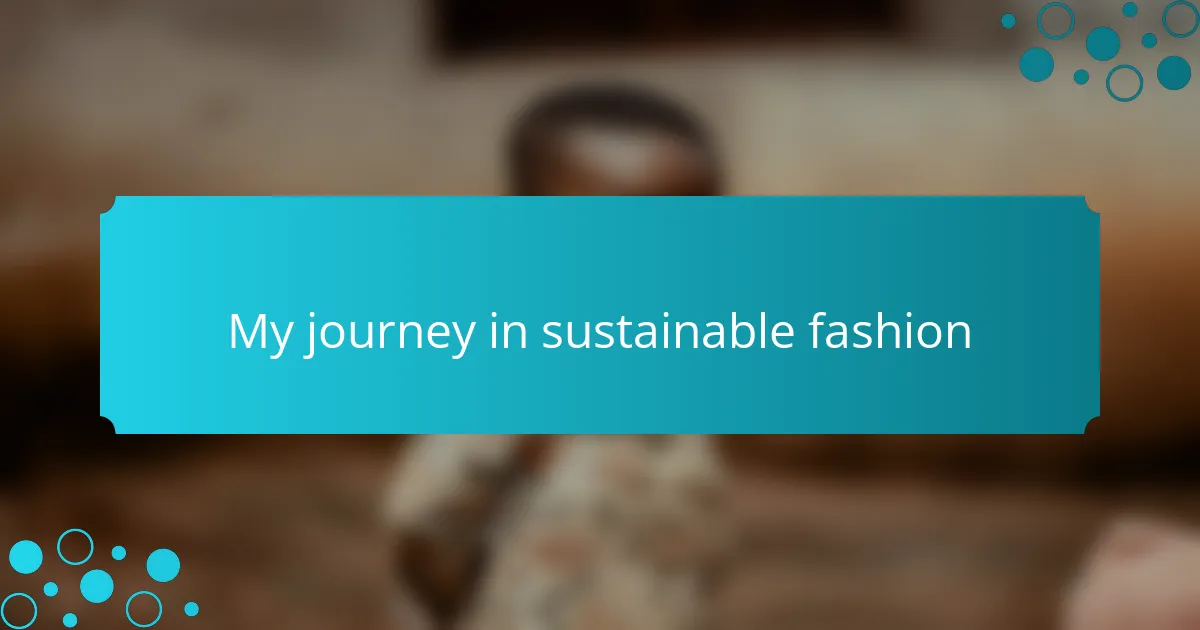
My journey in sustainable fashion
My journey into sustainable fashion began unexpectedly when I stumbled across a local thrift shop. I remember feeling delighted as I browsed through racks of pre-loved clothes. Each piece had a story, and I found myself captivated by the idea of giving these garments a new life.
As I delved deeper, I actively sought out brands that shared my values. I recall the moment I received my first purchase from a sustainable label. The packaging was minimal and eco-friendly, and I felt a genuine thrill knowing my choice supported ethical labor practices. It made me think—what if more consumers realized the power of their purchases?
Going to sustainable fashion events further enriched my experience. At one showcase, I connected with designers who poured their hearts into creating eco-conscious collections. Their passion ignited a flame within me, making me realize that this journey wasn’t solely about fashion; it was about contributing to a larger movement. Each time I don a sustainably made outfit, I feel a part of something meaningful, and I can’t help but wonder how many more lives we can touch through conscious choices.
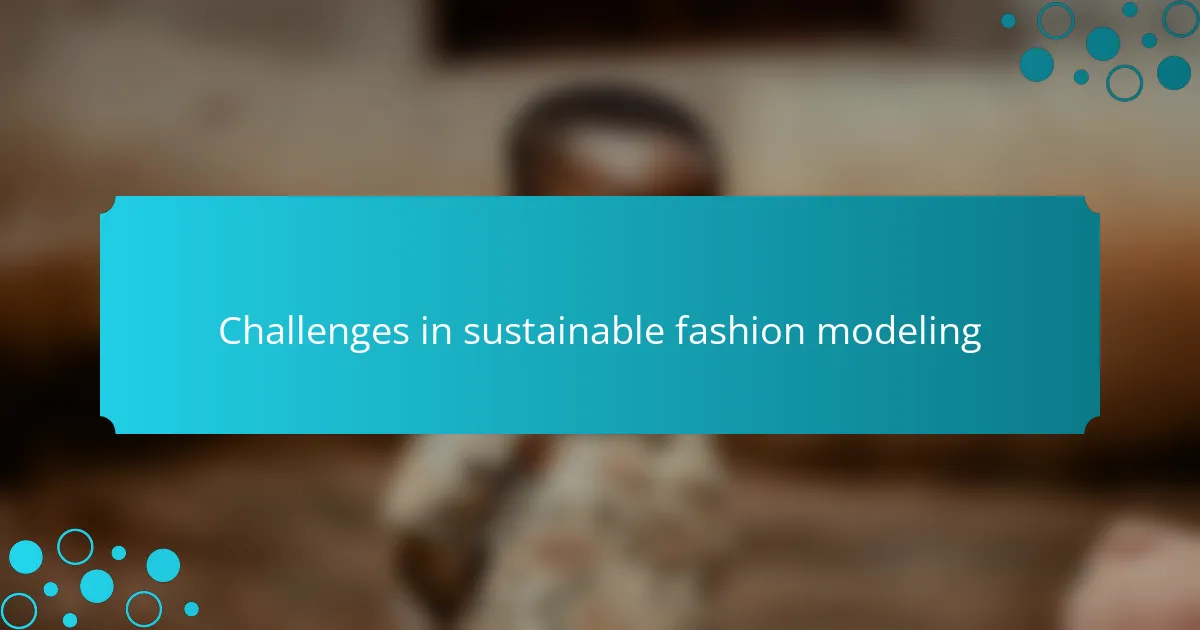
Challenges in sustainable fashion modeling
Navigating the realm of sustainable fashion modeling comes with its own set of challenges. One prominent hurdle is the inconsistency in the availability of sustainable materials. I often find myself searching for designs that align with ethical standards, only to discover that certain fabrics or specific styles are not readily accessible. This can be frustrating, especially when creative inspiration strikes, and the best materials aren’t always at hand.
Another challenge is the industry’s inherent resistance to change. Traditional fashion practices are deeply entrenched, making it tough for sustainable brands to gain equal footing. I remember a time when I shared sustainable fashion concepts with a brand that had been around for decades. While they appreciated the idea, they seemed hesitant to stray from their established processes. Have you ever felt that tug-of-war between innovation and tradition? It’s a common scenario that can stall meaningful progress.
Furthermore, awareness and education play crucial roles in this space. Many consumers are still unaware of what truly constitutes sustainable fashion. I’ve spent countless hours discussing these principles with friends who are just starting on their journey. Sometimes I feel overwhelmed by the amount of information out there. It makes me wonder—how can we simplify this message to engage more people? Ultimately, it’s about connecting with individuals on their level and helping them see that every small step toward sustainability matters.
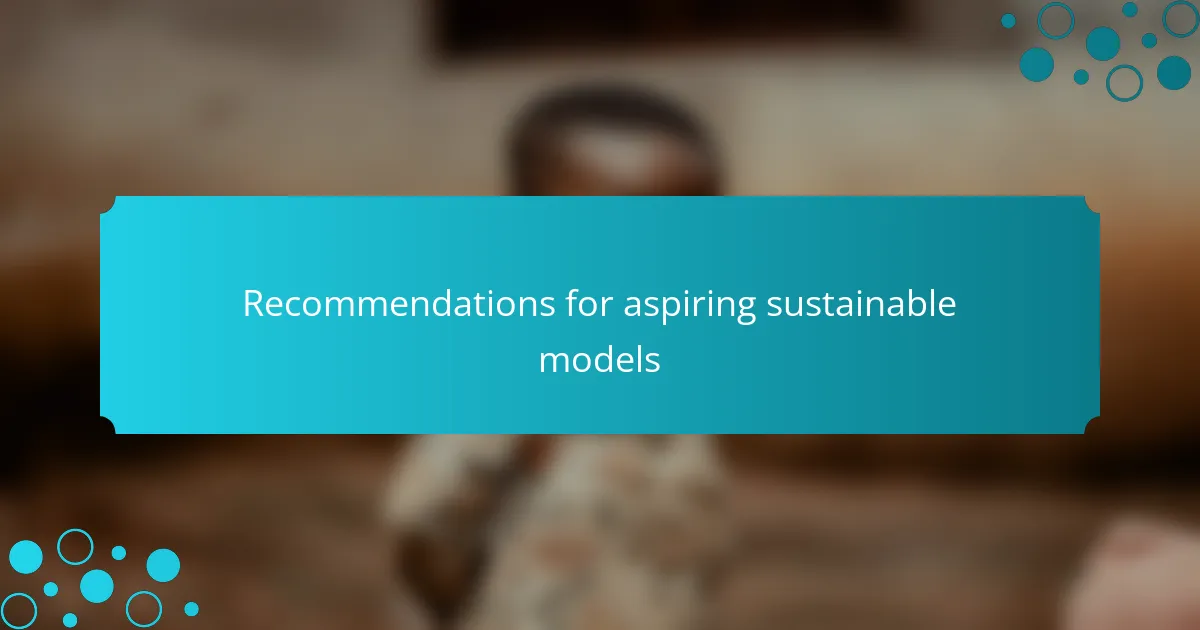
Recommendations for aspiring sustainable models
When I think about aspiring sustainable models, I see the importance of making conscious choices in every aspect of their careers. It’s crucial to research brands that prioritize eco-friendly practices and align with your values. I remember a time when I turned down a modeling opportunity because the brand’s environmental practices didn’t resonate with me. It felt liberating to stand by my principles.
Another recommendation is to build a strong online presence showcasing your commitment to sustainable fashion. Sharing your journey and educating your audience can inspire others and create a community around sustainability. I often engage with followers about my latest sustainable finds, and the conversations that unfold are enriching and motivating.
Lastly, networking with like-minded individuals can open doors to opportunities within the sustainable fashion industry. Joining groups or attending events focused on eco-conscious fashion can help you connect with others who share your passion. I’ve met some incredible people this way, and it always reminds me how collective action can drive real change.
| Action | Benefit |
|---|---|
| Research sustainable brands | Aligns your career with your values |
| Build an online presence | Inspires others and fosters community |
| Network with like-minded individuals | Creates new opportunities for collaboration |


